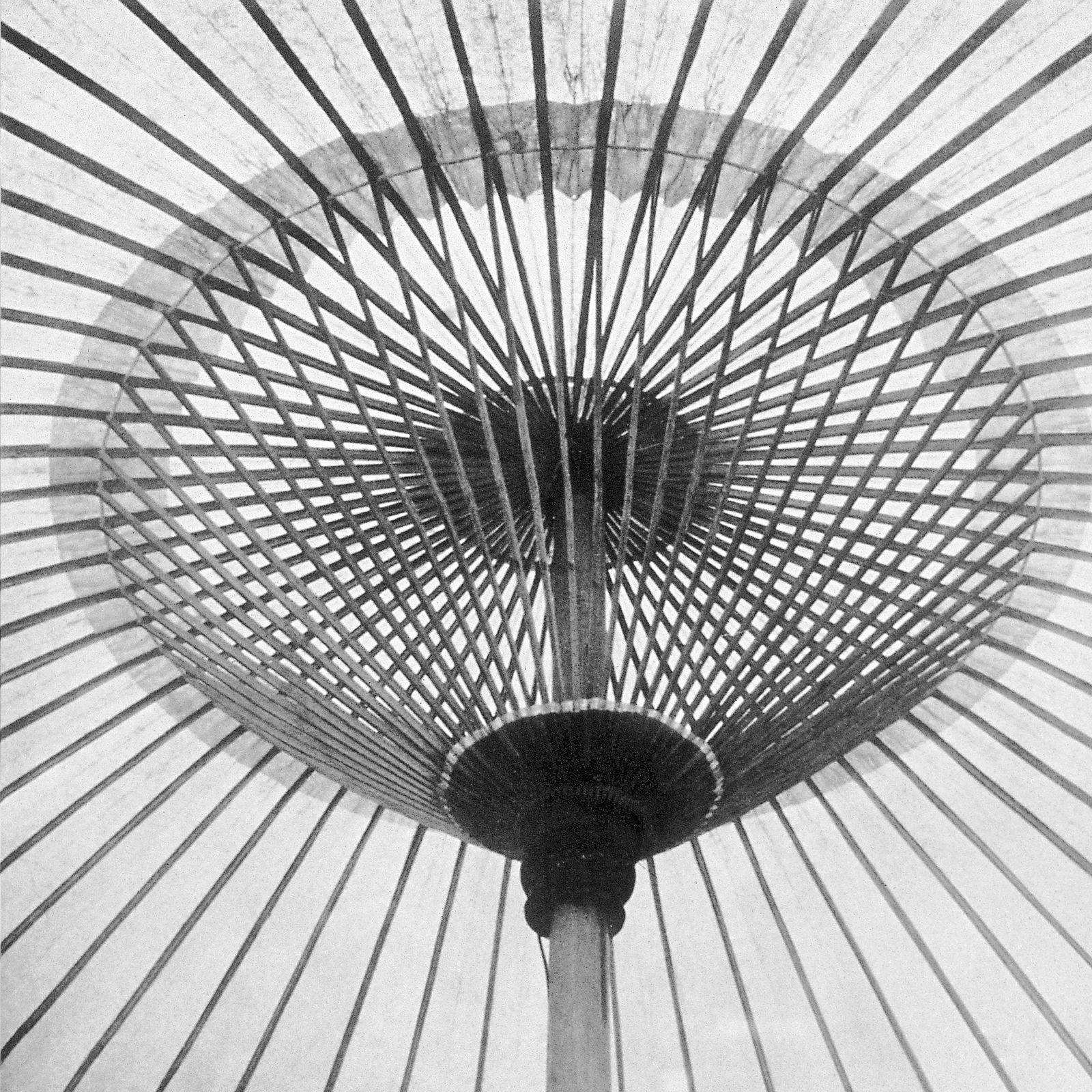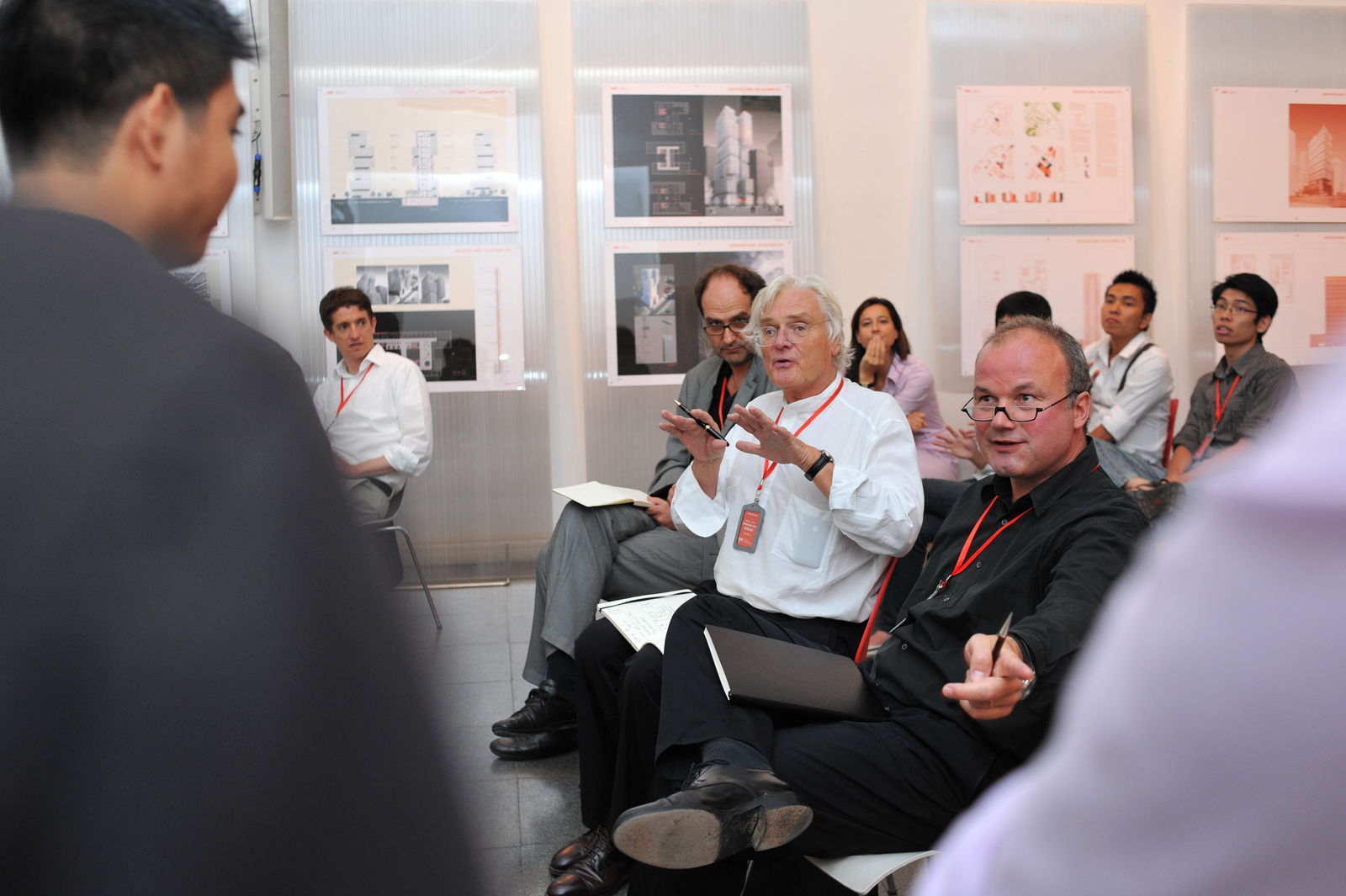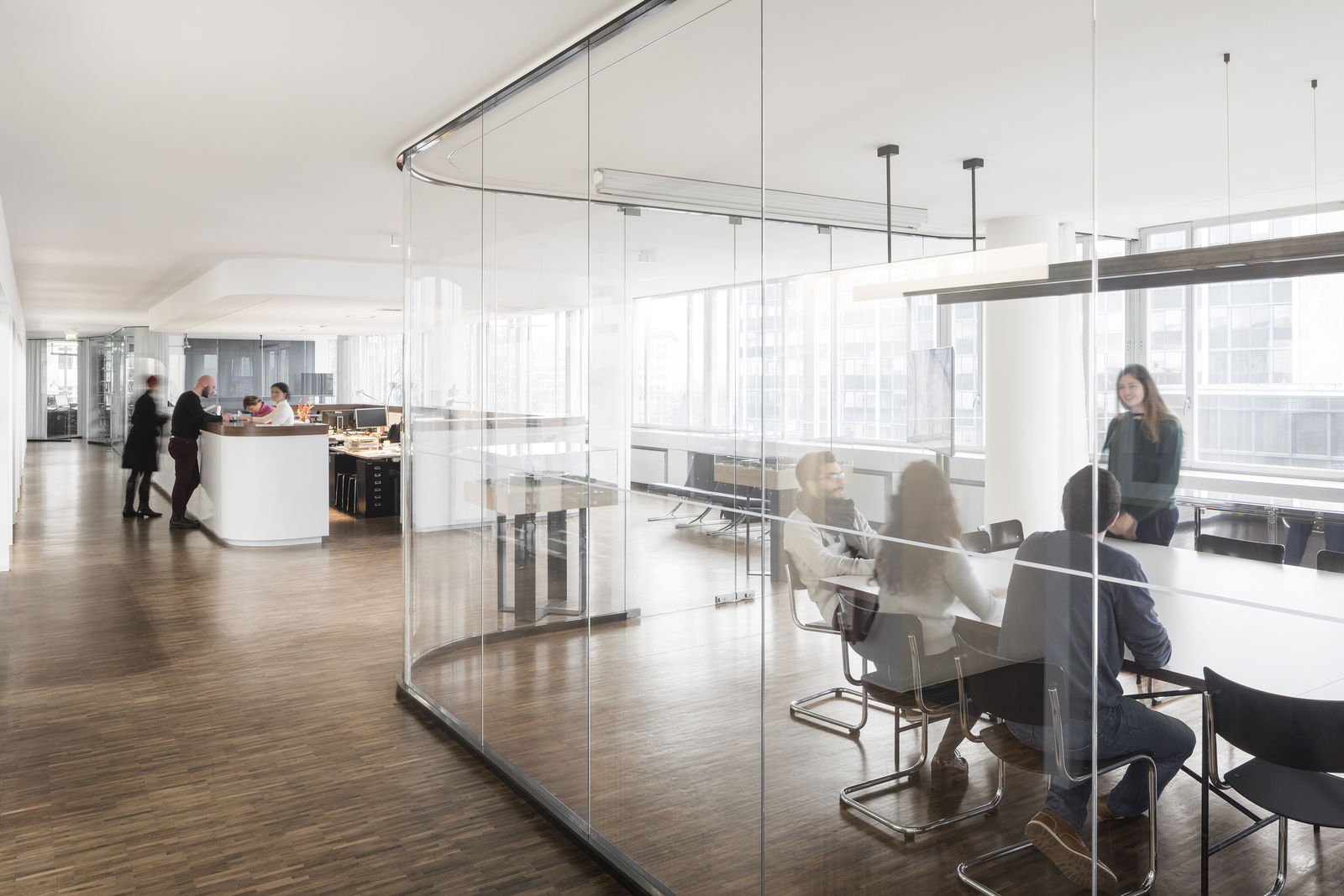Exhibition UMBAU. Nonstop Transformation // April 10 - May 5, 2025 - Jiushi Art Salon Shanghai
History
Meinhard von Gerkan and Volkwin Marg founded their partnership in 1965. From the very beginning they adopted a generalist position involving a holistic professional approach, with an openness towards building at any scale and any type of building—in the context of a wide range of cultural and local conditions. During their first year, the newly qualified architects won eight architectural competitions, amongst them—together with Klaus Nickels—the international competition for Berlin-Tegel Airport for which, subsequently, they were also asked to carry out all design stages, and which helped to set the practice up for the future. Later this was followed by other airports, amongst them Stuttgart and Hamburg.

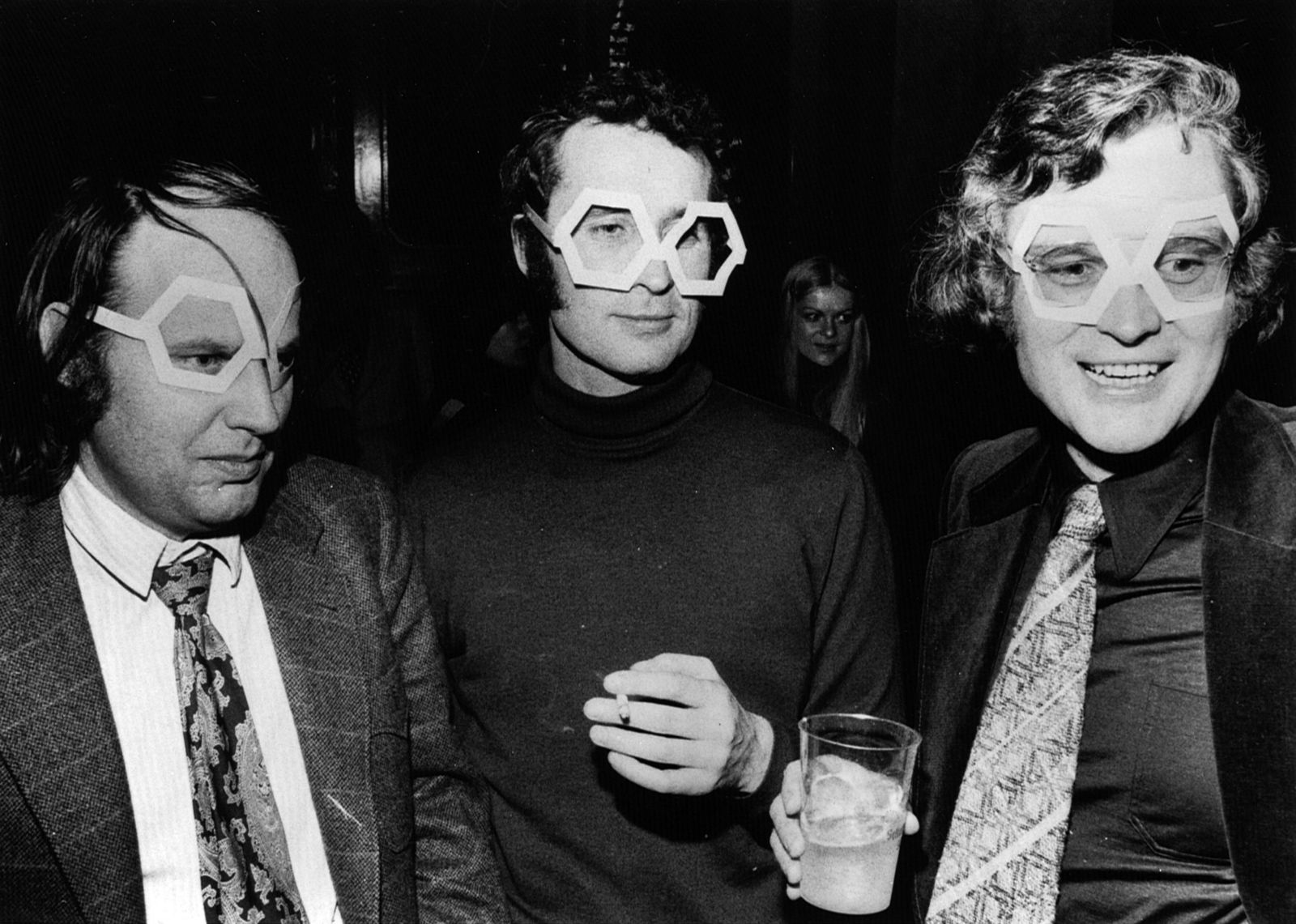
(right to left) Meinhard von Gerkan, Volkwin Marg,Klaus Nickels - Opening Berlin-Tegel Airport, 1975 © stark-otto
Projects completed in the Federal Republic of Germany
Since 1972 the architectural practice has been working as gmp · Architects von Gerkan, Marg and Partners. The European Patent Office in Munich, completed in 1979, is an example of the practice’s office and administration buildings—still a focus of gmp’s work today. Similarly, the Sports Forum of Kiel University marked the beginning of a series of magnificent sports buildings for the practice. The early projects are proof of the sustainability of gmp buildings; eleven of them have already been listed as historic monuments, including the Hanse-Viertel shopping arcade in Hamburg.

Hanse Viertel, 1980 © gmp Archiv
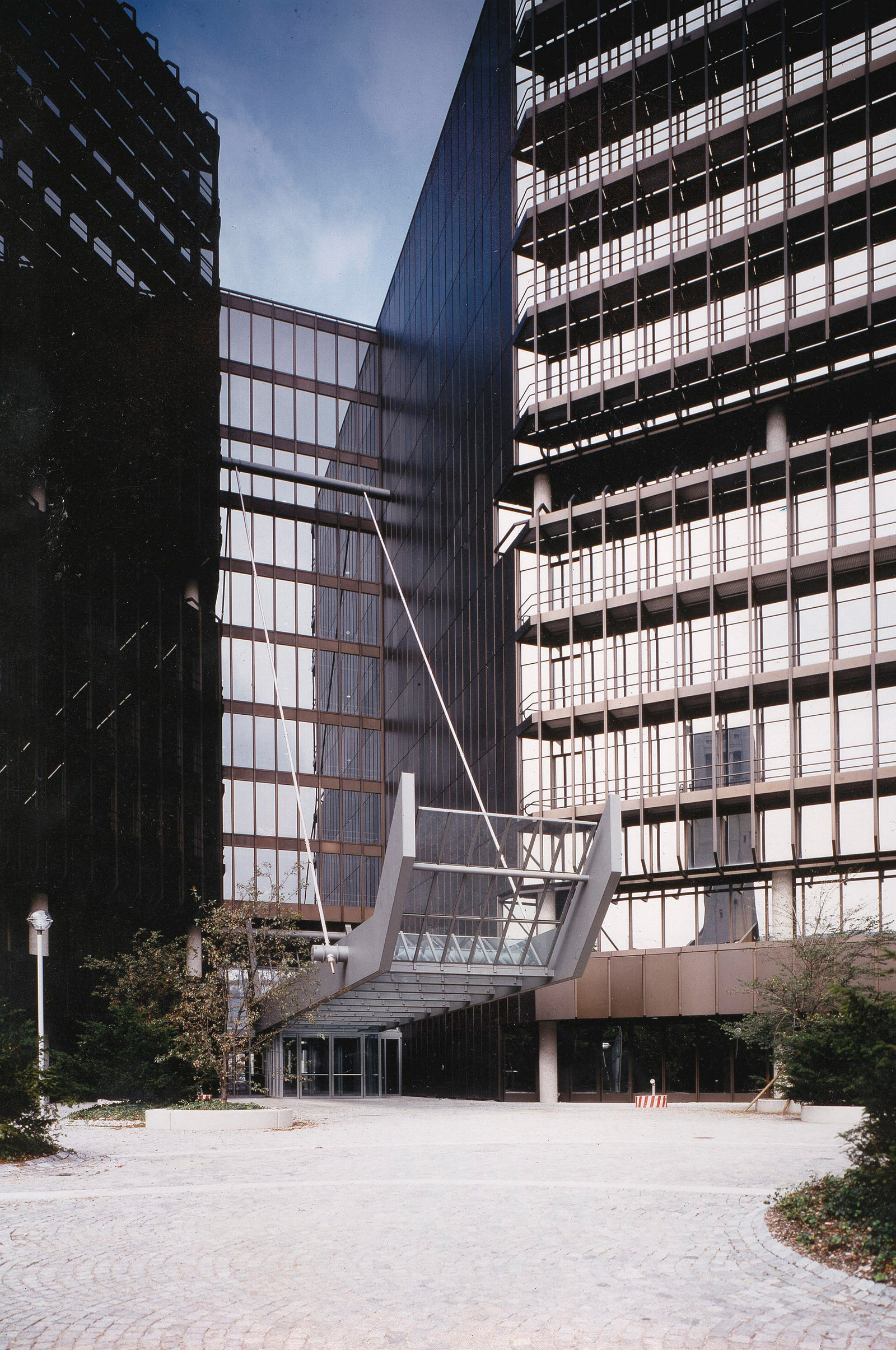
European Patent Office Munich, 1980 © gmp Archiv

Sports Center in Kiel, 1976 © Marcus Bredt
From Hamburg to around the world
To date, there is no other city where gmp have completed more buildings than Hamburg. These include office and Kontorhaus buildings, as well as refurbishment projects such as the lightweight grid shell roof covering the inner courtyard of the Museum for Hamburg History. With the expansion of their architectural activities in the 1980s to almost all large cities in West Germany, the practice established branches in Berlin, Braunschweig, Aachen, and Frankfurt. In 1978, gmp won first prize in the international competition for the National Library in Tehran. Two completed housing developments in Saudi Arabia in 1980 were the first completed projects outside Europe.

Pahlavi National Library, Teheran, 1978 © Bernt Federau
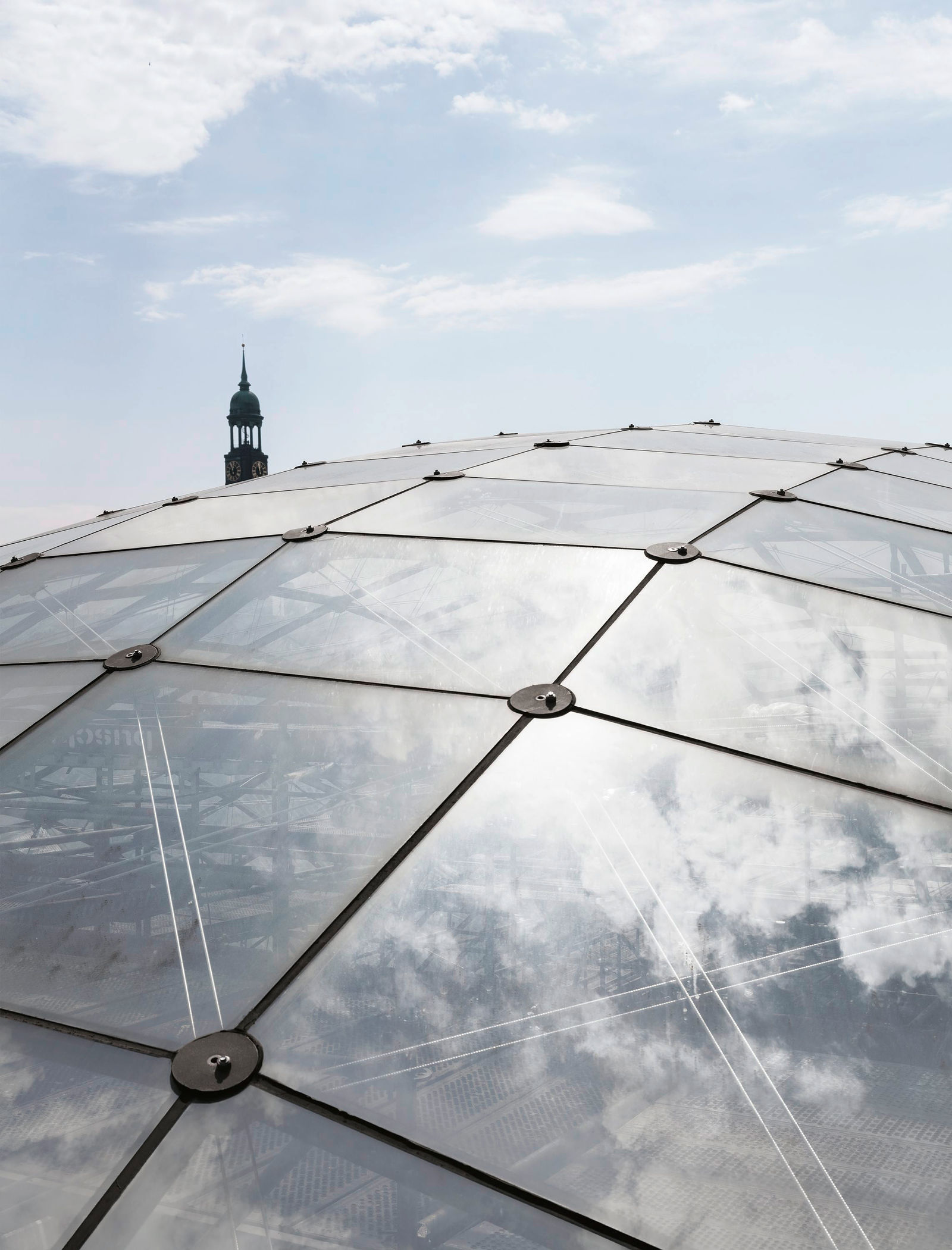
Museum of Hamburg History, Glass Roof, 1989 © Marcus Bredt
Development in the East
Following German unification, von Gerkan, Marg and Partners designed numerous projects in Berlin, primarily public buildings, including the largest interchange railway station in Europe, opened in 2006, as well as Spandau Railway Station, the Tempodrom events venue, and the Jakob-Kaiser-Haus for the German Bundestag. In 1996, the New Leipzig Trade Fair was one of the largest projects to open as part of “Aufbau Ost” (Development in the East). For Expo 2000 in Hanover, gmp designed the Christus Pavilion, which at the end of the World Expo was moved to its final position at Volkenroda Monastery. International projects followed in Turkey, Latvia, and Italy.

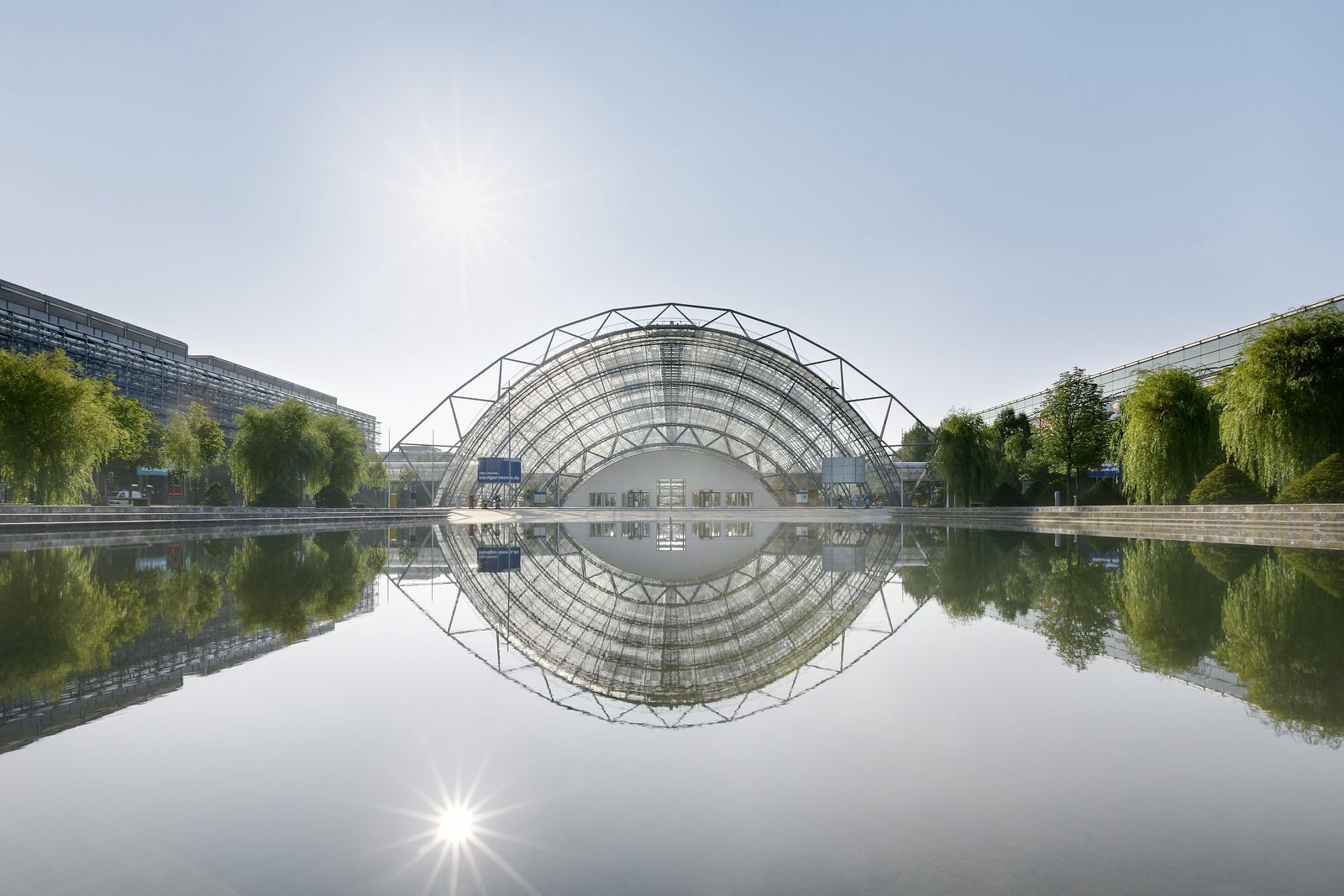
New Trade Fair Leipzig, 1996 © Marcus Bredt
Asia
In 1998 gmp won the competition for the German School in Beijing. The project was the trigger for intense building activities in China, continuing to this day. This was followed in rapid sequence by the Nanning Trade Fair, the conversion of the Chinese National Museum, as well as other cultural, sports, and transport buildings. Branches were established in Beijing, Shanghai, and Shenzhen, as well as in Hanoi. From 2002, work on the masterplan started for Lingang New City (now Nanhui New City) to the south-east of Shanghai. The Dalian Twin Towers marked the beginning of a series of high-rise projects in China, including several large ensemble developments and the Soho Bund project at Shanghai’s famous promenade along the Huangpu River. In Vietnam, too, a number of prestigious public buildings were created—the National Congress Center, the Hanoi Museum, and the parliament building of the Vietnamese National Assembly.

Bund SOHO,2016 © Christian Gahl
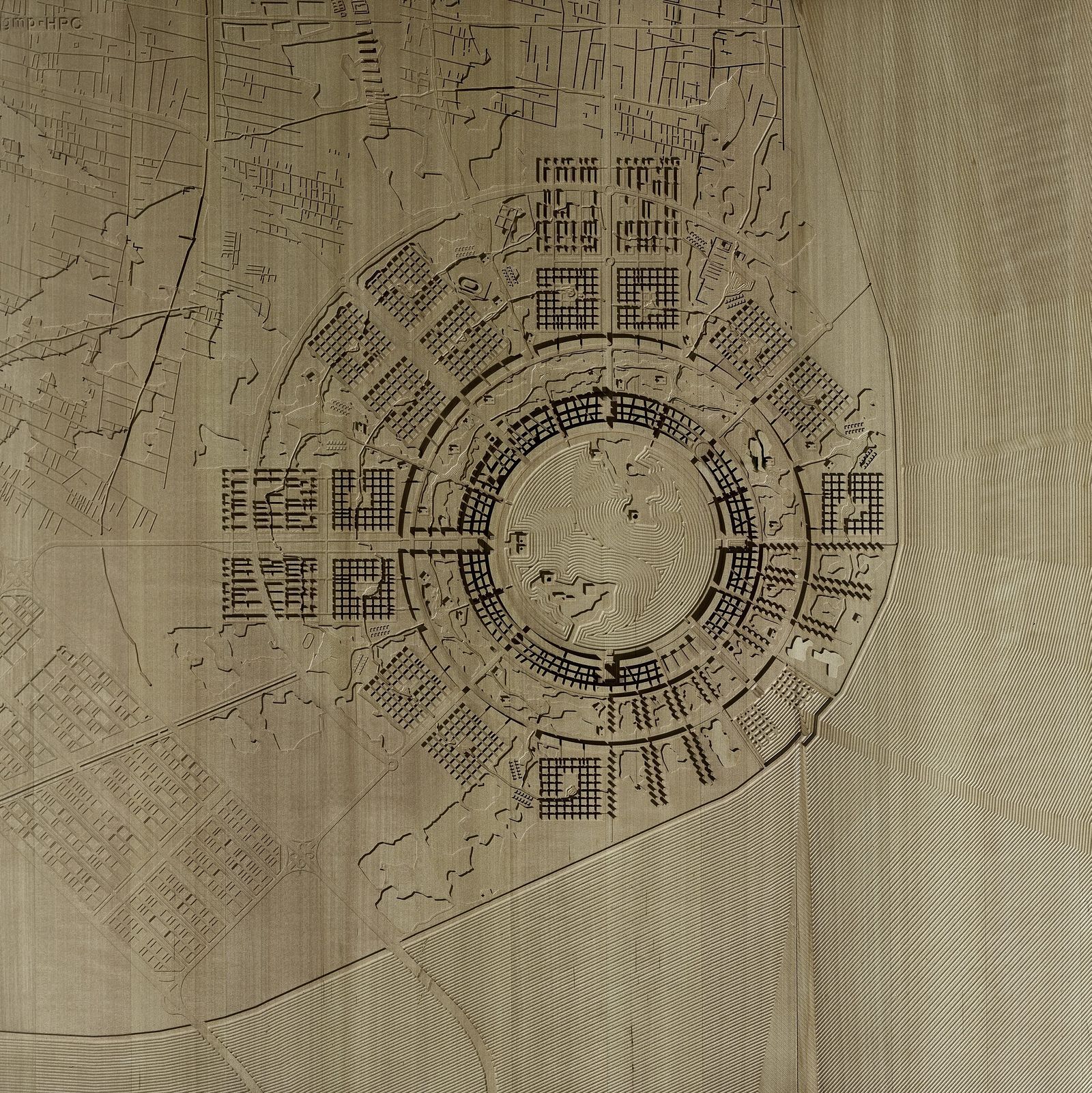
Lingang New City Model © Heiner Leiska
Arenas and sports parks
From the beginning of the millennium, gmp started their worldwide involvement with sports and stadium buildings for large international events, and became recognized experts in this field. The modernization, including a new roof, of the Berlin Olympic Stadium was followed by conversions and newly built stadiums for the 2010 FIFA World Cup in South Africa and that of 2014 in Brazil, as well as for UEFA Euro 2012. In China, the practice created large sports parks such as the Shanghai Oriental Sports Center and the buildings for the 2011 Universiade in Shenzhen. Further arenas were built by gmp in Romania, Azerbaijan, India, Ukraine, and Russia.
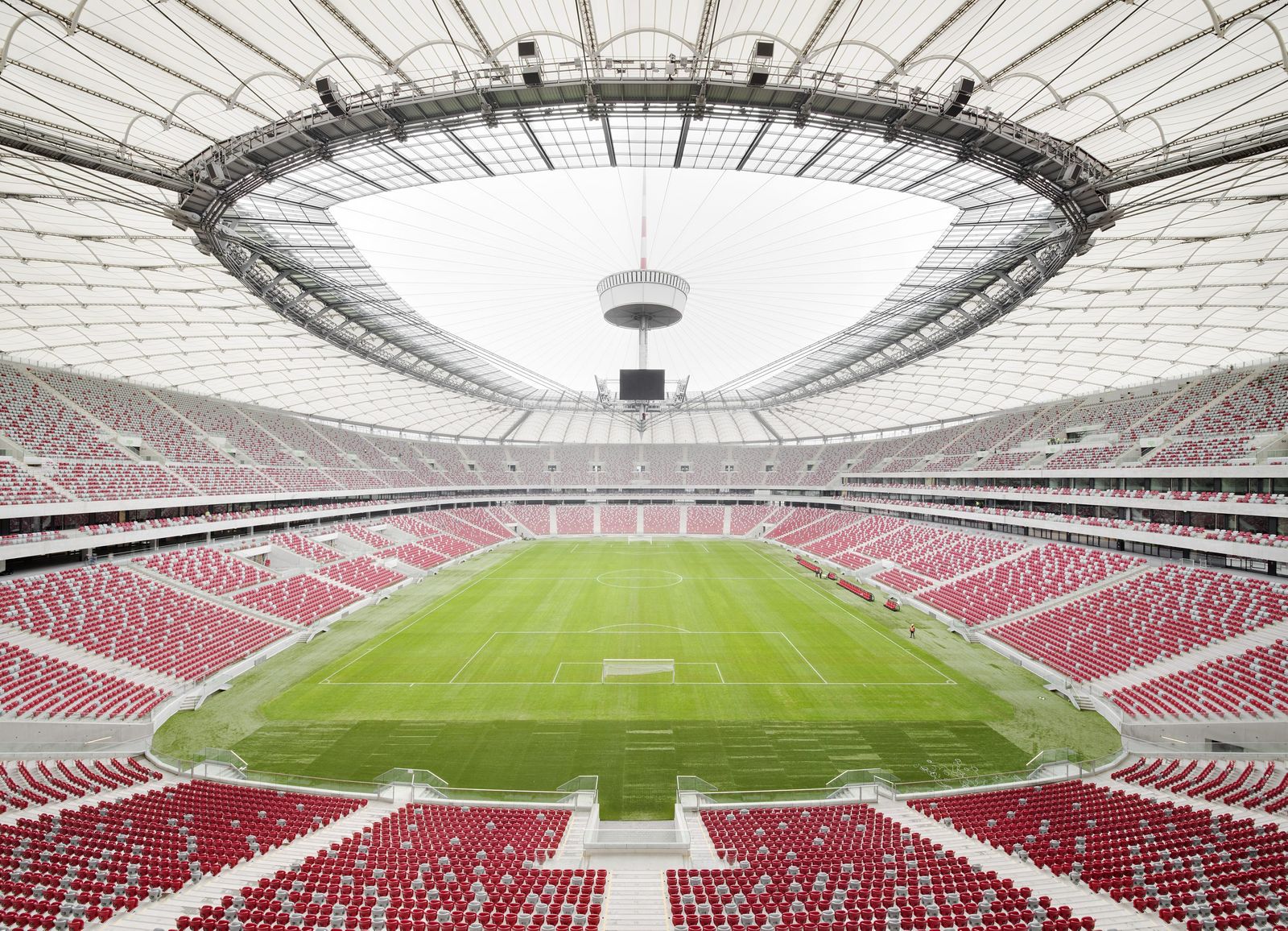
National Stadium Warsaw, 2012 © Marcus Bredt

Universiade Sports Center, 2011 © Christian Gahl
Continuing work in Germany
In 2007, Meinhard von Gerkan, Volkwin Marg, and their partners founded the Academy for Architectural Culture, aac, in Hamburg. With their involvement in the design of Hamburg’s HafenCity and Berlin’s Europacity, gmp has played a role in two of the largest city development projects in Germany. Their work was widely recognized following the conversion of Hans-Sachs-Haus in Gelsenkirchen, the new extension to Kunsthalle Mannheim, and the refurbishment of the Kulturpalast in Dresden—projects that were developed on the basis of a very thorough study of the existing listed buildings and taking into account the urban design context.
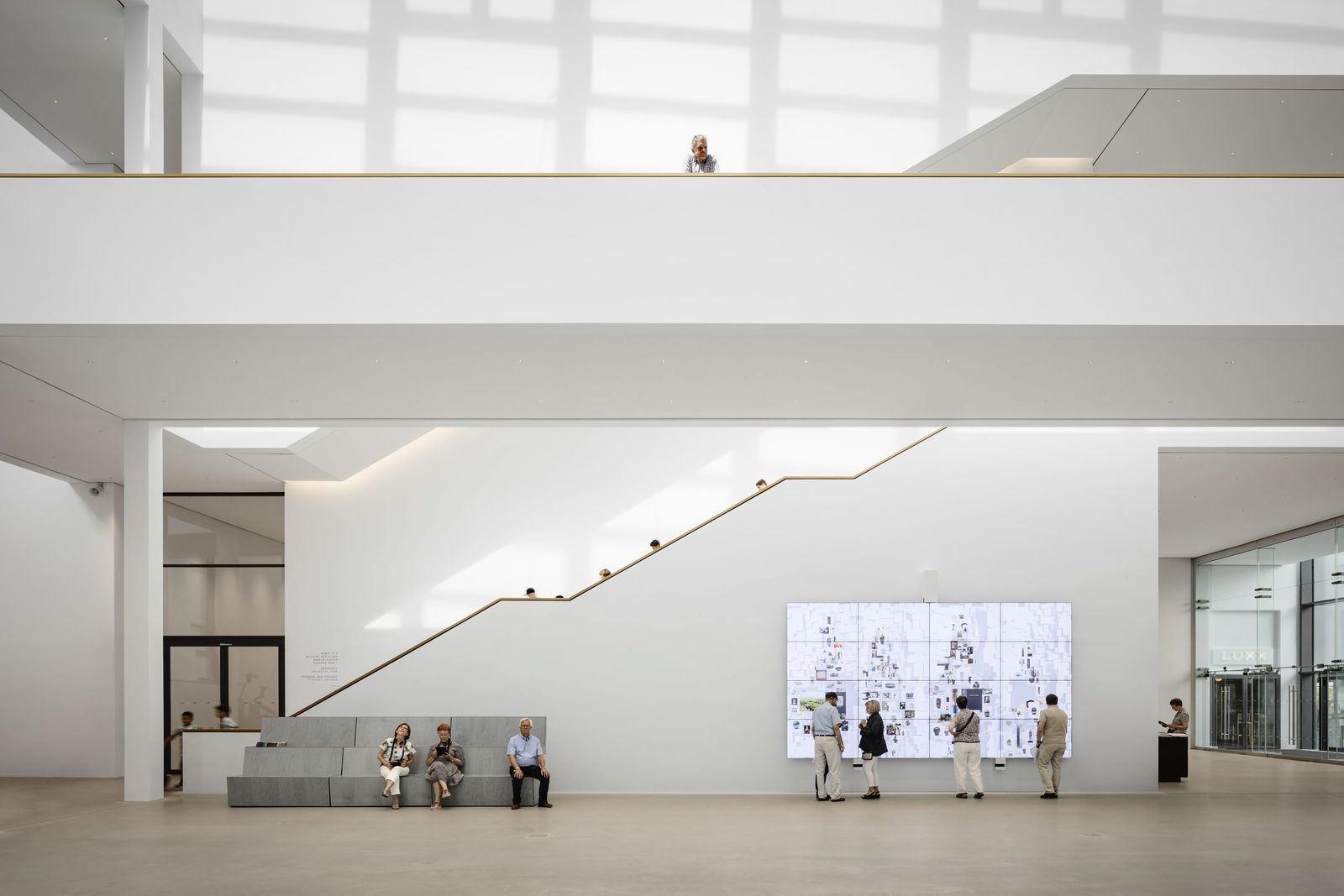
Kunsthalle Mannheim, 2017 © Marcus Bredt
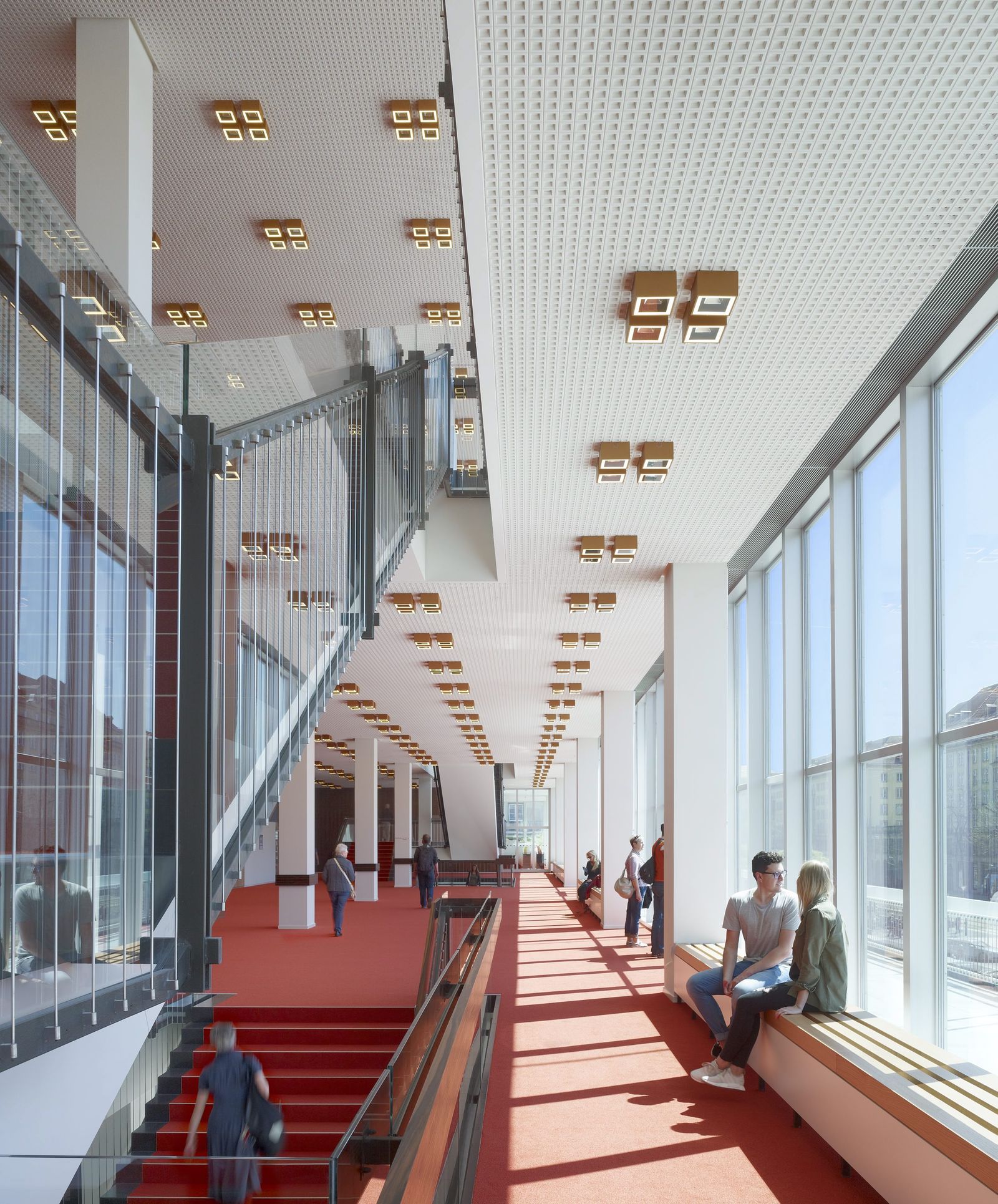
Kulturpalast Dresden, 2017 © Christian Gahl
Over the course of fifty years, gmp has won almost 600 first prizes in national and international architectural competitions, more than 300 of their buildings and projects have received awards. Together with their partners, Meinhard von Gerkan (1935-2022) and Volkwin Marg have realized over 550 projects in 23 countries to date. Besides Volkwin Marg, executive partners Nikolaus Goetze, Hubert Nienhoff, Stephan Schütz, Magdalene Weiss and Wu Wei manage the company.
